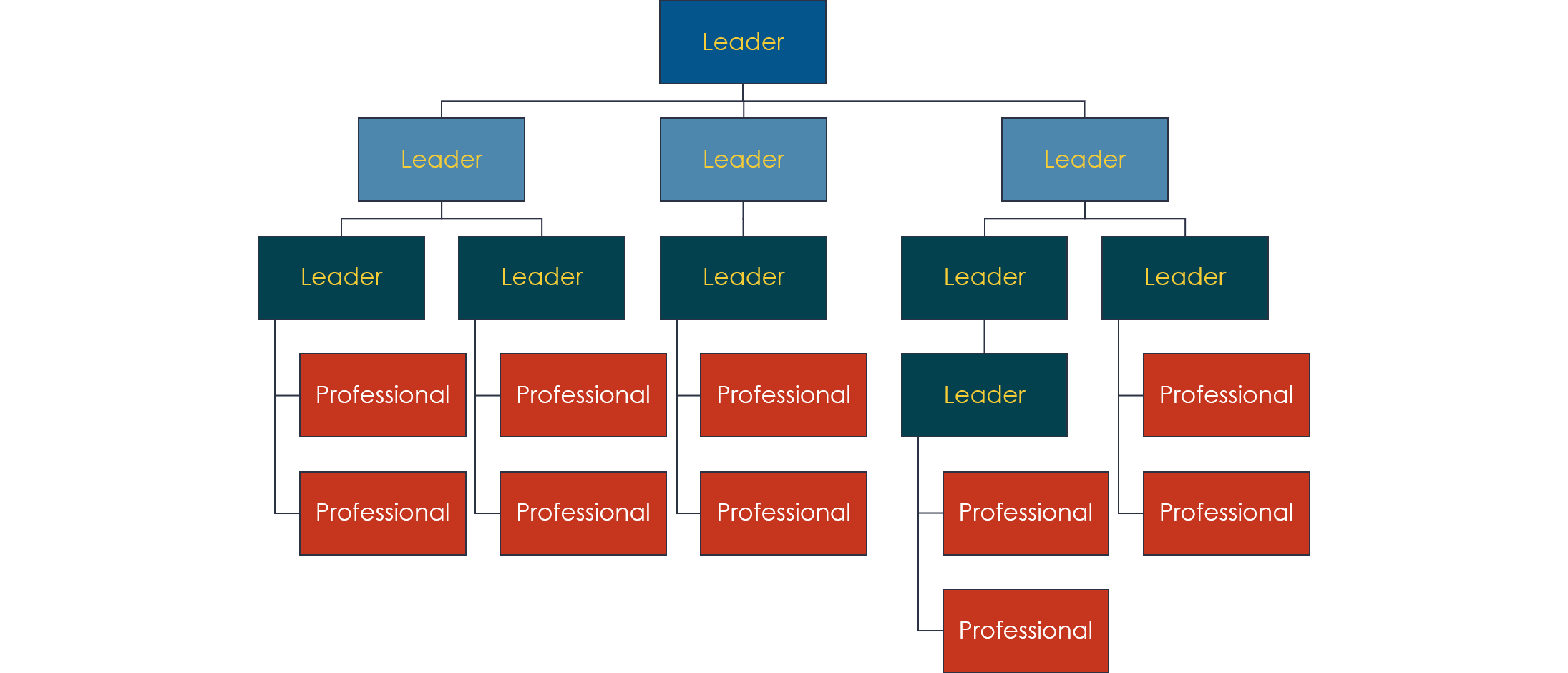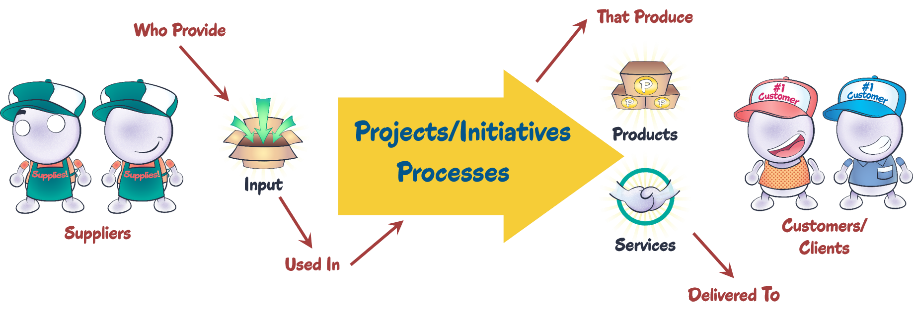Matrix Management Wiki
Home » Introduction » 1E. The MM 2.0 Definition of a Matrix
- 1E1. An organization is a vehicle for accomplishing business goals.
- 1E1i. The “business” is whatever the organization seeks to accomplish in the world (i.e., its mission).
- 1E2. A matrix is an organization that operates in two dimensions—the vertical and the horizontal.
- 1E2i. MM 2.0 does not use the concepts of formal or informal matrices. Those are MM 1.0 concepts.
- 1E2ii. In MM 2.0, all organizations that seek to align with both external customers and their own internal strategic goals are by definition matrices.
- 1E3. The vertical dimension is the dimension where resources are housed and managed.
- 1E3i. The vertical dimension is the dimension of bosses and subordinates (in VM 1.0 terms), which in MM 2.0 are called coaches and direct reports.
- 1E3ii. The vertical dimension is the dimension of authority.
- 1E3iii. Figure 1.3. Diagram of the vertical dimension of an organization.

- 1E4. The horizontal dimension is the dimension of customers, products, operations, and suppliers.
- 1E4i. It is the dimension of customer/supplier and team relationships.
- 1E4ii. It is the dimension of sectors and vectors.
- 1E4iia. (See Section 1I for definitions of sectors and vectors.)
- 1E4iii. Figure 1.4. Diagram of the horizontal dimension of an organization.

- 1E5. In a matrix, the organization aligns around its external customer, products/services, operational processes or projects and suppliers.


